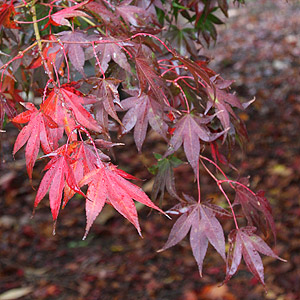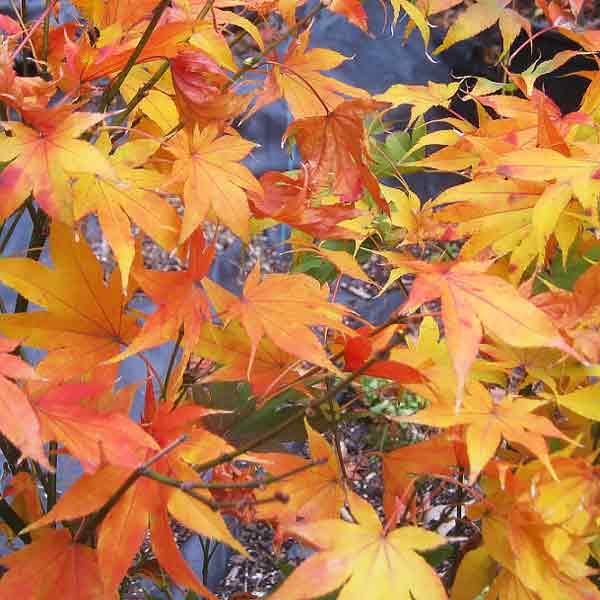
Japanese Maple trees come in a range of shapes, sizes and Autumn colors, all of these are considerations when choosing the right varieties for your garden.
Pictured we have Acer palmatum Osakazuki, a popular type in many gardens.
The Japanese Maple or ‘Acer Palmatum’ are a deciduous tree grown for their autumn foliage and structural shapes.
Most modern cultivars are grafted varieties using a hardy rootstock to ensure good growth and overall plant health.
Many Japanese Maple Varieties make great feature trees in any garden and once established are a reasonably hardy tree.
Foliage varies and includes laced and dissected leaves. Bark colour also varies.
Weeping or upright varieties.
Nearly all of the Acer palmatum dissectum cultivars are weeping varieties, the exception being Acer palmatum ‘Seiryu’ which is the only upright Japanese maple from the dissectum group.
However outside the dissectum group upright varieties include :
Acer griseum, Acer palmatum ‘Beni Tsukasa’, Acer palmatum ‘okagami, Acer palmatum ‘osakazuki’.
Many of the Acer japonica group are also upright.
Japanese Maple Foliage type
This basically falls into five types

- Dissectum – This group has deeply divided lobes and each lobe is again heavily dissected. The overall effect is a fine lacy foliage, very attractive and much sought after
- Palmatum – Lobes that are moderately divided
- Amoenum – Leaves that are only partly divided, coarser foliage than others
- Matsumurae – Deeply divided lobes almost the full depth of the leaf.
- Lineailobum – The deepest division of all but also narrow lobes
Japanese Maples for Fall color
Some tree will give red fall color other will give orange or yellow. Acer palmatum ‘ Atropurpureum’ has purple foliage while Acer palmatum dissectum ‘Viridis’ has green foliage
Size of Japanese Maple Trees
Japanese maple trees vary in size from dwarf to large trees. The dwarf types will be grafted and vary in height from 3ft (1m) to 6ft (2m).
Acer Palmatum Hanama Nishiki is one example of a dwarf form. With the larger growing types you will find that some varieties are smaller growing than others.
The naturally smaller growing varieties are widely used in bonsai.
Color of bark and texture
Bark color and texture varies greatly, from smooth gray to brilliant smooth red and then to the heavily peeling deep red bark of Acer grisseum.
Some of the more popular varieties of Japanese Maples include:
- Acer palmatum ‘Sango Kaku’ or Coral Bark Maple
- Acer palmatum ‘Bloodgood’
- Acer palmatum ‘ Atropurpureum’

